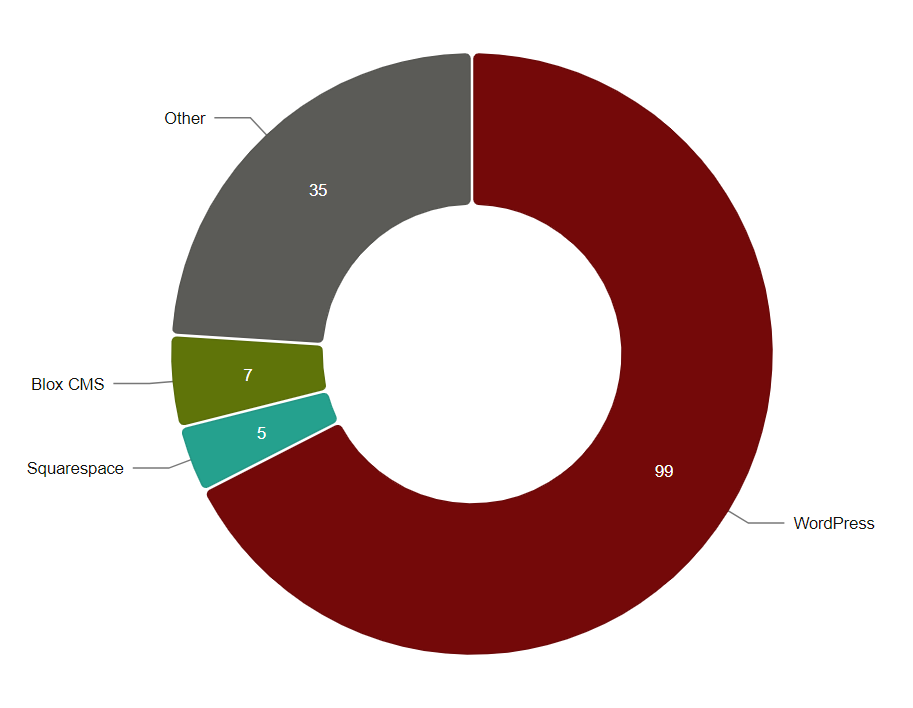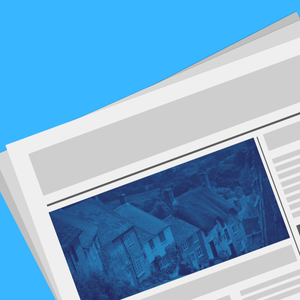The State of Local News reports, an initiative by Northwestern University, are a tough read, particularly if you’re older and buying a printed newspaper covering your community was once part of your weekly routine. Here are a couple of points from the News Deserts and At-Risk Communities part of the report that frame the state of affairs in the US:
- In the early 1900s, there were around 24,000 weekly and daily newspapers. Today there are 6,000 that are struggling
- Today, there are around 550 local or state digital news sites and less than 1,000 active local minority or ethnic news outlets
- Today, more than half the population does not have a local news outlet or just a single one (which is almost always a weekly paper)
This article by The Week – The demise of local news – explains why and even highlights a new worrying trend: the proliferation of ‘pink slime.’ That is, news publications are being set up to promote misinformation driven by political agendas.
It’s not all bad news
Governments are trying to figure out fairer and more competitive models. There was some progress in Australia when Facebook and Google agreed to a commercial deal worth $1B over four years with a number of the major media companies, but the former has recently decided to pull out. One can only hope that a new agreement will work for all parties involved (including smaller publishers left out of the original deal).
The State of Local News report also covers ‘Bright Spots‘ – local news startups and legacy titles finding ways to grow sustainably. Two thirds of the the 146 news websites listed on the map are powered by WordPress. That’s a gold medal for our favorite CMS!

Second spot went to Blox CMS, a propriety solution that promises to maximize revenue and streamline your multimedia content production. Squarespace got bronze and, somewhat surprisingly, Ghost and Wix are only used by two and one publication respectively.
The report also highlighted 17 local news publications – the Bright Spots – that are successfully navigating today’s economic challenges (but always looking for ways new ways to sustain growth).
The leaders of the 17 Bright Spots all mention the importance of pivoting to meet their communities’ needs with news of high value, which is necessary to gain support through subscriptions, memberships, donations and viewership. Each outlet is finding unique ways to accomplish these goals. All say they are still searching for a pathway to sustained growth.
Of the 17 local news publications, 10 are published using WordPress, 6 by other platforms and 1 has gone offline. So, WordPress’ share here is similar. It’s also interesting to see that 3 out of the 6 non-WordPress publications are powered by arcxp, a solutioned owned by the Washington Post, that is itself owned by Jeff Bezos and therefore hosted on AWS.
Member Content
State of Local News - Data
Airtable list of local publications featured in The State of Local News report’s ‘Bright Spots‘ map.
Sign up to unlock this content – registration is free.
Another metric that gives us hope – something I learned when writing the State of Digital Publishing announces new offering post – is that increased literacy, higher disposable incomes and easier access to technology, particularly in the Asia-Pacific region, translates to growing demand for content.
The biggest fear: will Big Tech make local news publications even more redundant?
The Week’s article I linked to at the beginning of this piece explains this clearly:
The main driver, of course, is the shift to online readership, which destroyed the advertising revenue that once helped make newspapers profitable. Most of those ad dollars now go to Google, Facebook, and other sites. Newspaper revenues plummeted from $49 billion in 2006 to $14 billion in 2018, according to Pew. As many newspapers became vulnerable, Wall Street hedge funds and other investors bought them up at a discount and drastically cut staffs in pursuit of short-term profits. Half of America’s daily papers are now owned by hedge funds, private equity firms, and other investment companies, according to a Financial Times analysis.
The issue is compounded by Google keeping more of the eyeballs it attracts. A SparkToro blog article reports that 64.82% of searches on Google (desktop and mobile combined) ended in the search results without clicking to another web property. That’s up from about 50% in 2019. So, after creating the largest content distribution channel, they are evolving into more of a destination.
But Byron Perry doesn’t think this is a problem. He has just launched Gazetteer San Francisco, which he hopes will become a blueprint of many other local newspapers that will grow and thrive even by bypassing Big Tech altogether:
We believe media companies would be in a better position had they never engaged with tech platforms.
And that is what we propose to do. Every day. To just go along living our lives, writing and reporting, publishing impactful news stories, and gleefully ignoring the algorithmic ebbs and flows of whatever the platforms are prioritizing on any given week.
What that means in practical terms is that we will produce great local journalism, publish it on a totally pay-walled website, and distribute it directly to paid subscribers – via email and text message.
We have no social media presence, and we don’t care about search engine optimization.
We believe that removing platform considerations will allow us to focus on doing better journalism that speaks for itself and gains an audience.
I hope this is part of a trend. Or a natural progression of a maturing ‘creator economy’, even.
Joe Pulizzi, one of the world’s top content marketing authorities, has been telling us for years not to build a business on ‘rented land’ and how to make money out of content. Byron Perry’s approach is more radical, though. He is building his business on his own land AND refusing to ‘rent’ additional shop fronts on Google, Facebook, X and the rest of big tech’s platforms.
It is possible to build a sustainable business outside Big Tech’s walled gardens where everyone hangs out. There are 17,000 writers getting paid on Substack. More than 240,000 creators have at least one paying subscribers on Patreon. Vendors are jumping on the bandwagon too: ConvertKit is helping 600K+ creators create, distribute and monetize content with their sustainable growth tools for creators, and Convesio is evolving into a growth and monetization platform via their new Convert and Pay offerings.
Mission alignment
The general consensus, as reiterated by The State of Local News, is that local news publications play a critical role in a healthy democracy. The American Journalism Project reminds us that:
Research shows that the loss of local news is having an insidious effect on our democracy — contributing to polarization, decrease in voting, and government accountability. Local news is an essential lever to a healthy democracy; it helps communities understand what’s at stake in local elections, equips them to get involved in the political process by voting, contacting officials and running for office, reduces political polarization, and holds public officials accountable.
WordPress’ mission complements this: to Democratize Publishing. That is, to remove the barriers between technology and the ability share a voice. In this case, to report on local news.
Automattic is doing so via its Newspack offering, and successfully so too. They celebrated their 200th launch back in 2022 and I wouldn’t be surprised if they’re closer to 400 now. Another measure of their success is the frequency with which they go to market with a new feature. Check their own news to get a sense of that, including supporting efforts by the Knight Foundation to help cover news for the forthcoming US elections.
Opportunities for aspiring WordPress publishing entrepreneurs
I’ll start with a quick keyword research exercise (on Google US, using SpyFu) to get a sense about demand, looking at ones with a degree of intent. Here’s a couple of interesting ones I found:
- cms for news – 80 Volume | 0 Keyword Difficulty
- new digital platforms for local news – 70 Volume | 0 Keyword Difficulty
- newspack – 322 Volume | 22 Keyword Difficulty
- best lightweight cms for magazine – 120 Volume | 0 Keyword Difficulty
Member Content
Local News Publication Keywords
AirTable list of 44 intent keywords relating to local news publications.
Sign up to unlock this content – registration is free.
There isn’t tons of traffic for the higher intent keywords but definitely something to work with, that you can complement and support with longer tail keywords. It also seems that more people are looking for platforms (and themes) for producing magazines, which in some cases are news-focused. I included ‘newspack’ as an example keyword to rank for if you’re taking on the competition – think ‘Competitor Brand Name Alternative’ type of pages.
Next, I’ll highlight the risks. In her article – Saving Community Journalism: The Path Ahead – Penelope Muse Abernathy reminds us of both the difficulty and the mission:
We don’t yet know where the path will lead in the days ahead and whether we face increasingly difficult terrain. But we now know our ultimate destination: not only to save community journalism but also to reimagine and reinvigorate it, ensuring the health of our democracy and society in the digital age.
This is the view of a researcher. A more important measure is the difficulty local news publishers are having to generate revenue, and even how creative they have to be to do so. It’s not impossible, though. Check out State of Digital Publishing’s section on Monetization for ideas.
So, the questions are: is there demand in the local market for news, what offerings are there already and and what product can you put together and market to grow a sustainable revenue stream?
Can you go to market with an offering similar to Newspack’s but focusing on a specific geography? Is there an opportunity for a WaaS type of product for local news? Maybe you local area lacks news coverage and there’s an opportunity to become a publisher yourself?
Have a look at Lede too, a solution for publishers developed by Alley, and powering Gazetteer San Francisco. Can you put together a similar offer? Perhaps partnering with PublishPress?
My view is that there are more positive than negative signals about the future of local news. I also think that WordPress is very much part of the solution, both as a platform and as an alternative model to Big Tech.




Pete Ericson
Great article and totally agree WP is ripe for local publishers. We work with this turnkey solution for local news publishers and they are having great success in small markets: https://www.paywallproject.com/
Lawrence
Thanks Pete, and I need to update the article to mention them as well as Leaky Paywall 🙂